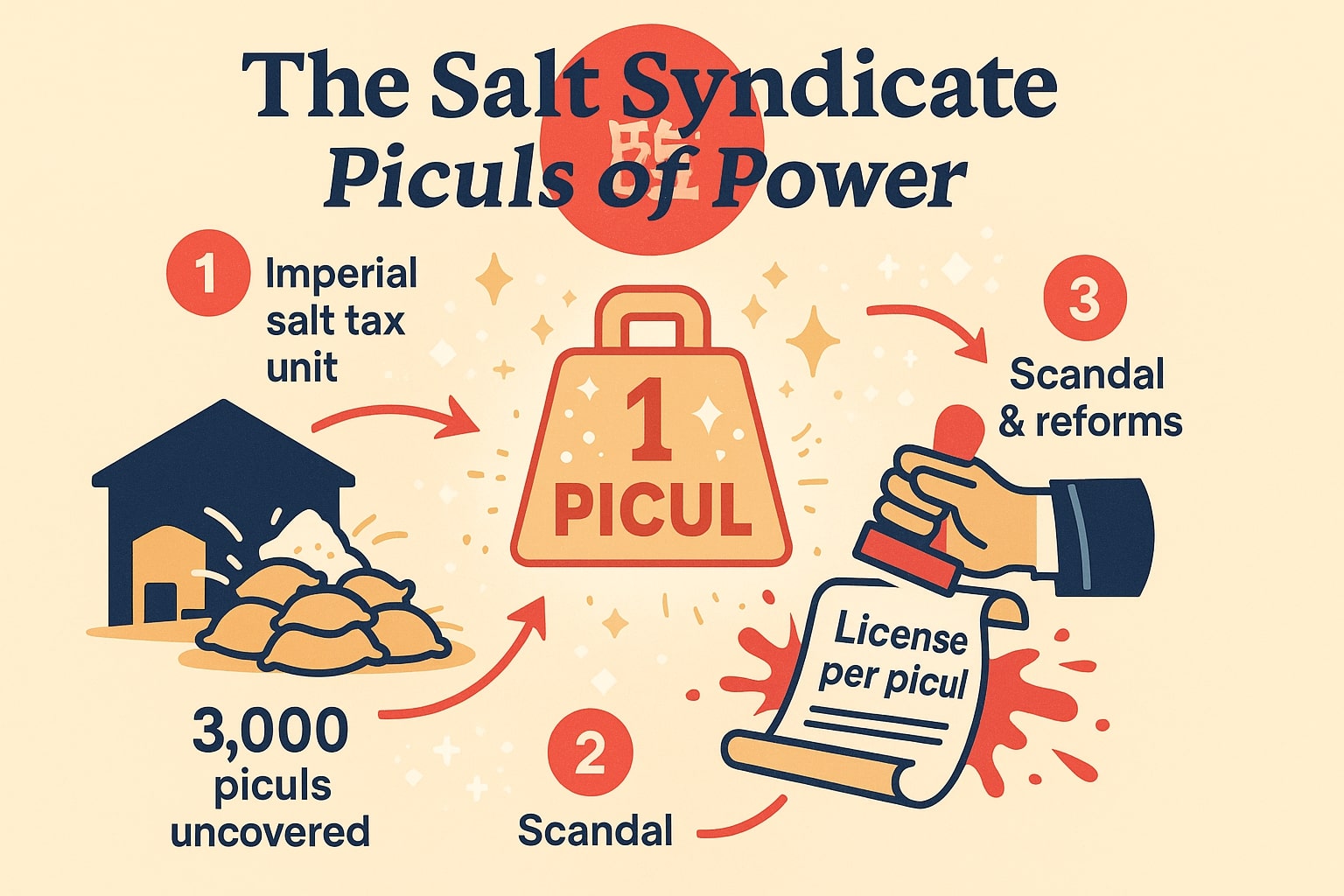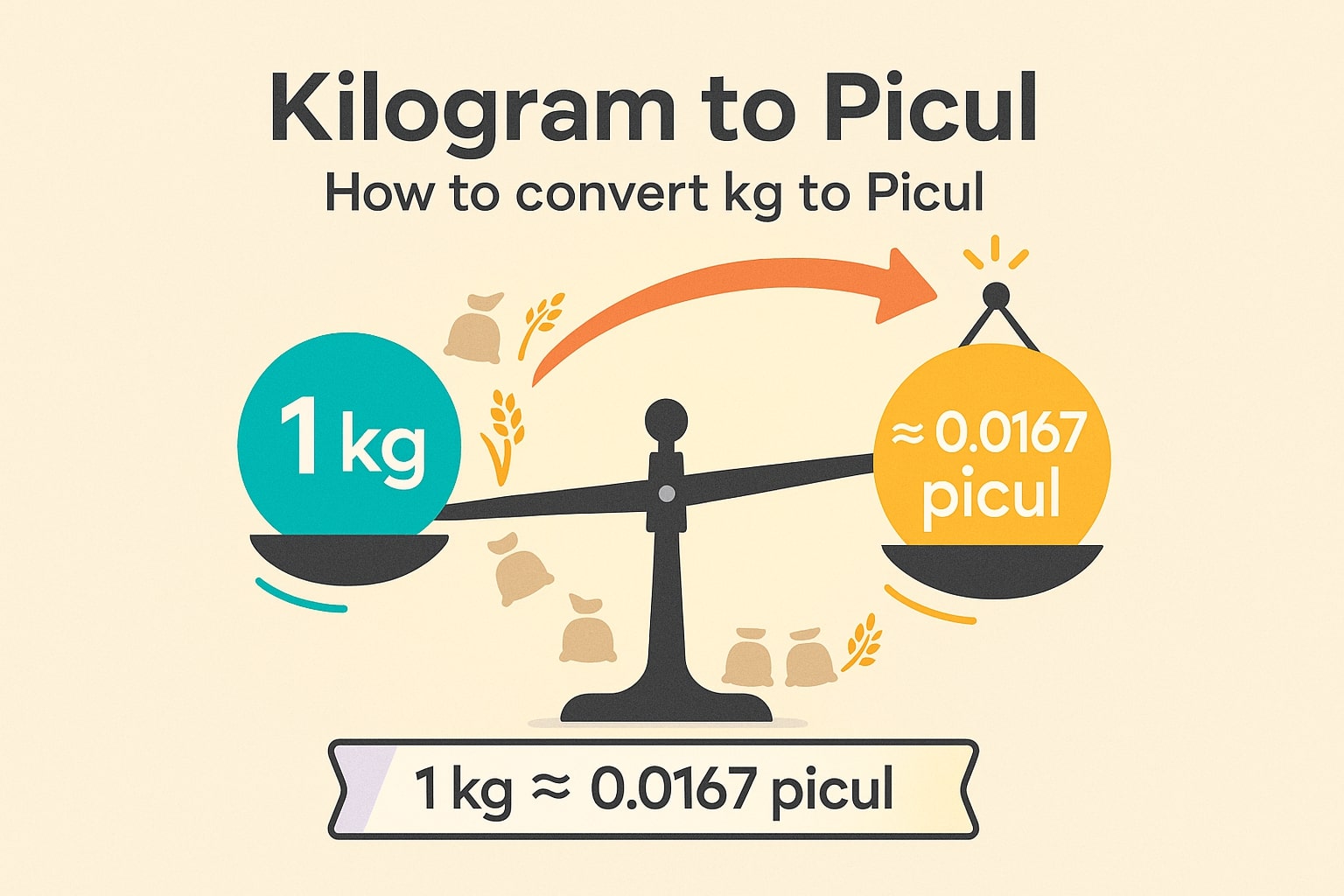Kilogram to Picul – How to convert kg to Picul
Converting kilogram to picul connects modern measurement with centuries of Asian trade, agriculture, and culture. The picul, once a core unit in Chinese and Southeast Asian commerce, helps researchers and general users alike bridge traditional and metric systems. Jetcalculator’s Kilogram to Picul Converter makes this transition effortless. For broader unit conversions, explore our versatile Unit Converter Tool.
Kilogram and Picul
-
Kilogram (kg) is the globally accepted SI unit of mass, equal to 1,000 grams. It’s used across industries from science to commerce. If you need to convert kilograms to other standard or regional units, try our dedicated Weight Converter.
-
Picul, also known as dan in some Chinese texts, is a traditional East Asian unit of weight. In the Chinese context, it’s defined as 100 catties, and one catty equals 500 grams.
So:
1 picul = 100 × 500g = 50 kilograms

How to Convert Kilogram to Picul
The formula is simple:
Picul = Kilogram ÷ 50
Examples:
-
100 kg → 100 ÷ 50 = 2 piculs
-
75 kg → 75 ÷ 50 = 1.5 piculs
-
250 kg → 250 ÷ 50 = 5 piculs
You can try our all-in-one Conversion Tool for seamless calculations across dozens of units.
Did You Know?
-
Kilogram:
• In 2019, the kilogram’s definition was updated based on the Planck constant, replacing the physical kilogram prototype.
• Kilograms are essential in industries like shipping, food production, and medicine.
• In Olympic sports, athlete weight classes are measured precisely in kg. -
Picul:
• In Imperial China, rice, salt, and tea were traded and taxed by the picul.
• The English word picul comes from the Malay word pikulan, meaning “load carried on the shoulder.”
• Hong Kong’s colonial trading system listed cargo in piculs up to the mid-20th century.
• Vietnam also used the picul (often as 60 kg), especially for rice exports in the south.
The Salt Syndicate: Piculs of Power
During the Ming Dynasty, salt was one of the most heavily taxed commodities in China — and piculs were the official measure. The imperial government issued salt licenses per picul, creating an elite merchant class known as the “Salt Syndicates.”
In one historical account from the Yongle Encyclopedia, an official was discovered hoarding 3,000 piculs of untaxed salt in hidden warehouses along the Grand Canal. The resulting scandal led to mass dismissals and stricter trade laws. This tale illustrates how one picul of salt could hold more power than gold in ancient China.

Conclusion
Though no longer in everyday use, the picul remains a vital historical unit — especially when studying trade, tax, and agriculture in East and Southeast Asia. Whether you’re a student, researcher, or simply curious, understanding how to convert kg to picul brings ancient systems into modern context. Use Jetcalculator’s Kilogram to Picul Converter for accurate results, or explore our full Conversion Tool to dive deeper into global units.

